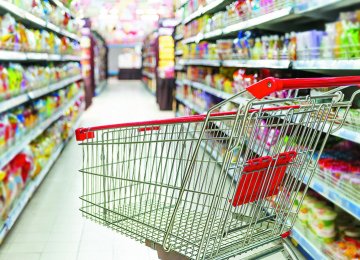In 2015, when Russia-Turkey relations entered a phase of tension due to the downing of a Russian fighter jet by Turkey, a propitious opportunity emerged for Iran's food industry to replace the Turks in the huge Russian market.
However, that did not happen. Failing to seize the opportunity was yet another indication of the structural deficiency in Iran's food industry. As things stand, without embarking on crucial reforms and rewriting policies and practices, expecting high levels of growth in the key food industry is an exercise in futility.
"Iran's food industry accounts for 15% of all jobs in Iran -- almost 400,000 people have found direct employment in the field. It contributes 9.2% to GDP. Moreover, it has attracted 16% -- around 150 trillion rials (close to $3.89 billion) -- of the total investments.
Nearly 11,200 food production units operate in the country, accounting for 12% of all industrial companies," head of the Agriculture Committee at the Tehran Chamber of Commerce, Industries, Mines and Agriculture, Kaveh Zargaran was quoted by the Persian economic journal Ayandehnegar as saying.
More Costly Than Int'l Markets
Given the variety of produce in Iran and the favorable climate, he says, there is ample scope for the food industry to grow both in output and exports.
"Revenues from the food industry could replace Iran's earnings from oil exports, provided the industry is supported and the hurdles eliminated. The imposition of prices on agricultural produce by the government is indeed one main impediment to growth in the area."
Every year, the government buys staple foods, including certain grains and dairy products, from local farmers at guaranteed prices to build up its strategic reserves and control prices in the domestic market.
Yet, Zargaran says that these guaranteed prices are usually higher than those in global markets.
"We have always been opposed to government pricing. This makes Iranian products more expensive compared to similar foreign goods. As such, our products cannot compete in the international markets."
The government, says the businessman, insists on guaranteed purchases and increasing the prices of these products every year. This is while prices for some products have declined in the international market.
"This, along with high production costs, has limited our export capabilities to a large extent. For example, our dairy industry has significant potential in terms of technical knowhow, experience and workforce. But, the price of milk that goes to the dairy companies is higher compared with other countries. This too is the case for raw materials for other products like confectionary, chocolate and flour…"
Iran losing its ability to compete internationally aside, Iranians are also compelled to pay higher prices for food they buy in the domestic market, Zaragaran rued.
According to the Central Bank of Iran, food accounts for almost 26.5% of expenses of an average Iranian household. This is while the figure is barely 6% in the US.
"High lending costs of banks have made investments rather difficult, if not impossible. This applies to many industries struggling in Iran. At present, we are hoping to provide the much-needed financial resources (loans and credits) for the food industry through foreign investors and have taken the first steps in this regard."
Ray of Hope
He conceded that the long years of sanctions undermined the food industry's need for advanced machinery and equipment. In the past few months, however, measures have been taken to revamp the industry.
"We have made improvement in the packaging industry over the past few years. Yet, there is still room for higher growth, especially in packaging dates, saffron and pistachio."
The geopolitical proximity of Iran, says Zargaran, which gives businesses access to the 400-million market of the region, offers exceptional export opportunities.
"Iran has close to 51 million hectares of arable land, almost a third of which is under cultivation of different crops. Moreover, we have a new generation of young entrepreneurs and businesspeople in the food industry with their sights set on international markets."






Add new comment
Read our comment policy before posting your viewpoints